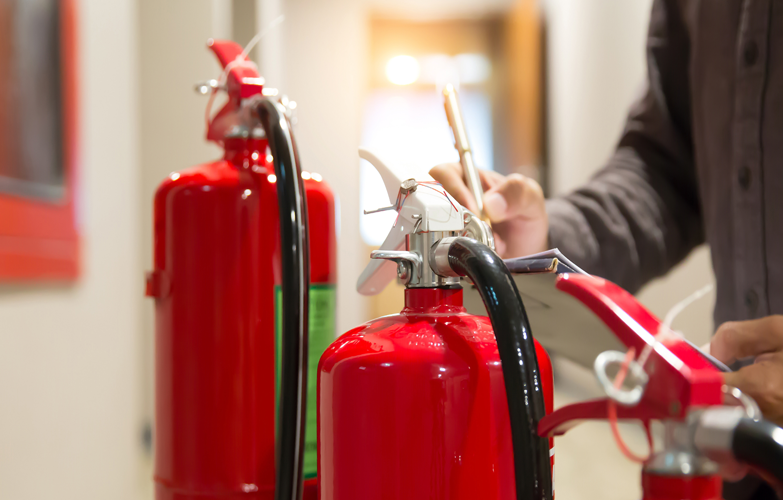A Guide to Fire Protection Equipment
Fire Protection Equipment: Safeguarding Lives and Property Fire protection equipment plays a crucial role in safeguarding lives, property, and the […]

Fire Protection Equipment: Safeguarding Lives and Property
Fire protection equipment plays a crucial role in safeguarding lives, property, and the environment from the devastating effects of fire. Whether in residential, commercial, or industrial settings, having the right fire protection equipment is paramount for fire safety preparedness. In this comprehensive guide, we will delve into the various types of fire protection equipment, their functions, importance, and best practices for selection, installation, and maintenance.
Understanding Fire Hazards
Before delving into fire protection equipment, it’s essential to understand the nature of fire hazards. Fires can originate from various sources, including electrical faults, cooking, heating systems, flammable liquids, combustible materials, and even natural causes like lightning strikes. Identifying potential fire hazards is the first step towards effective fire protection.
Types of Fire Protection Equipment
- Fire Extinguishers: Fire extinguishers are portable devices designed to extinguish or control small fires. They come in various types, each suitable for different classes of fire:
- Class A: Suitable for fires involving ordinary combustible materials like wood, paper, and textiles.
- Class B: Designed for flammable liquids such as gasoline, oil, and grease.
- Class C: Specifically for fires involving electrical equipment.
- Class D: Intended for fires involving combustible metals like magnesium and titanium.
- Class K: Used for fires in commercial kitchens involving cooking oils and fats.
- Fire Sprinkler Systems: Fire sprinkler systems are automatic fire suppression systems installed in buildings. They consist of water-filled pipes with sprinkler heads strategically placed throughout the structure. When a fire is detected, the sprinkler heads release water, helping to control or extinguish the fire before it spreads.
- Fire Alarms: Fire alarms are essential for early fire detection and warning. They consist of smoke detectors, heat detectors, and manual pull stations. Smoke detectors sense the presence of smoke particles, while heat detectors detect a rise in temperature. Manual pull stations allow occupants to manually activate the alarm in case of emergency.
- Fire Suppression Systems: Fire suppression systems are installed to suppress fires in enclosed spaces or critical areas where traditional firefighting methods are impractical. Examples include:
- Clean agent suppression systems: Utilize gases or chemicals to extinguish fires without causing damage to equipment or the environment.
- Foam suppression systems: Release foam to smother and suppress fires involving flammable liquids.
- CO2 suppression systems: Use carbon dioxide gas to displace oxygen, suppressing the fire.
- Fire Hose Reels: Fire hose reels are fixed reels containing hoses connected to a water supply. They are typically installed in buildings to provide a supplementary fire-fighting option alongside fire extinguishers. Fire hose reels are useful for tackling larger fires or providing a continuous water supply until firefighters arrive.
Importance of Fire Protection Equipment
- Life Safety: Fire protection equipment helps protect occupants by providing early detection and suppression of fires, allowing for safe evacuation.
- Property Protection: Fire protection equipment minimizes property damage by containing fires and preventing them from spreading.
- Business Continuity: In commercial and industrial settings, fire protection equipment is crucial for maintaining business operations and minimizing downtime in the event of a fire.
- Compliance with Regulations: Building codes and regulations often mandate the installation of fire protection equipment to ensure compliance with safety standards and regulations.
Selecting Fire Protection Equipment
When selecting fire protection equipment, several factors should be considered:
- Type and nature of fire hazards
- Size and layout of the building
- Occupancy type
- Regulatory requirements
- Budget constraints
It’s essential to consult with fire safety professionals or qualified experts to determine the most suitable fire protection equipment for specific needs.
Installation and Maintenance
Proper installation and regular maintenance are critical for ensuring the effectiveness of fire protection equipment. Installation should be carried out by qualified technicians following manufacturer guidelines and local regulations.
Regular inspections, testing, and maintenance are necessary to ensure that fire protection equipment remains operational at all times. This includes:
- Testing fire alarms and detection systems
- Inspecting and servicing fire extinguishers
- Flushing and testing sprinkler systems
- Checking fire hose reels and suppression systems
Fire Protection Equipment
Fire protection equipment is a vital component of any comprehensive fire safety plan. From fire extinguishers and sprinkler systems to alarms and suppression systems, each type of equipment plays a unique role in mitigating the risks associated with fires.
By understanding the different types of fire protection equipment, their importance, and best practices for selection, installation, and maintenance, individuals and organizations can enhance their fire safety preparedness and minimize the impact of fires on lives and property. Remember, fire safety is everyone’s responsibility.